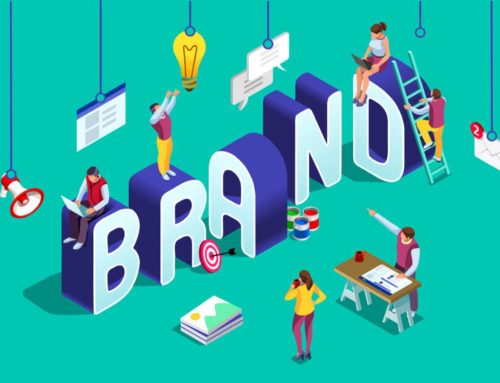The American Marketing Association defines a brand as a name, term, symbol, and/or design that’s intended to identify the goods and services of one seller or a group of sellers and to differentiate them from those of the competition.
However, we argue that a brand is more than a mere name that helps with identification and differentiation. Identifying a brand and differentiating it from competing brands only makes sense when the brand offers value. We define a brand as a value-generating entity (name) relevant to both customers and the brand owner. If no one wants to buy the brand, the name doesn’t have much market relevance. Such a brand fails to provide value to either the company or customers. But what does it mean to say that a brand offers value to customers and companies? Let’s first consider what we mean by brand value to companies.
Surprisingly, we have paid so much attention to brands as identifiers and marketplace differentiators that we have not paid much attention to the substantial, real, and strategic benefits that brands can provide to companies. But these benefits are numerous and significant.
What An Admired Brand Does
- Revenue Generator: An admired brand increases customer loyalty and attracts new customers.
- Cost-Efficiency Enhancer: An admired brand is in demand, which allows the company to take advantage of economies of scale and allows the company to enjoy cost-saving customer brand loyalty and brand advocacy behaviors.
- Growth Facilitator: An admired brand facilitates the introduction and success of its extensions to other markets and other products.
- Human-Capital Builder: An admired brand helps recruit and retain talented people who will ultimately determine the company’s success in the market place.
- Employee-Morale Booster: An admired brand motivates employees to protect and strengthen the brand.
- Second-Chance Provider: An admired brand enhances customers’ willingness to forgive mistakes made by a company.
- Market Protector: An admired brand serves as a barrier to entry to future competitors.
- Alliance Facilitator: An admired brand facilitates alliances with desirable and powerful external partners.
- Asset Builder: An admired brand enhances the company’s marketplace value, and also allows it to demand a premium price in a brand-selling situation.
Revenue Generator
An admired brand increases customer loyalty and attracts new customers. These twin outcomes enhance a brand’s revenue. Although producing a soft drink is not rocket science, new entrants find it incredibly hard to compete in this market, since most customers have a strong and long-standing preference for a particular soft drink brand. And this holds true worldwide. A strong brand also increases revenue by making customers less price sensitive, allowing companies to charge a higher per-unit price. Think about the price premium brands such as McKinsey and Goldman Sachs can charge in the marketplace.
Cost-Efficiency Enhancer
An admired brand is in demand, which allows the company to take advantage of economies of scale. Strong brands also create favorable word of mouth (WOM) and customer evangelists who further contribute to marketing efficiency by lowering marketing costs. In fact, some brands became marketplace successes purely through WOM. Trader Joe’s is an example. Think about the stories customers relate about the unique products they can get only at Trader Joe’s. China’s Xiaomi, a tech company, relies entirely on brand communities and WOM from its fans for publicity and brand-promoting activities. Or consider the pride customers take in their durable Patagonia jackets and the stories they share about them. Since advertising and promotion costs often eat up a substantial portion of companies’ budgets, enormous cost efficiencies are realized by fan-based WOM.
Growth Facilitator
An admired brand can be leveraged and extended, creating growth (and revenue) from new product or market categories. An admired brand makes it easier for companies to grow and grow efficiently, through product and brand extensions that use the brand name. Such extensions help the company’s overall growth. Oracle grew by extending its brand to a portfolio of cloud and mobile solutions. Apple’s extensions have allowed it to grow from $19.3 billion in 2006 to $234 billion in December of 2015.
Human-Capital Builder
An admired brand helps recruit and retain talented people who will ultimately determine the company’s marketplace success. Talent is the most difficult core competency for competitors to copy. Think about Google and Tesla’s abilities to attract top talent. Admired brands attract top talent at all levels of the organization.
Employee-Morale Booster
An admired brand also motivates employees to protect and strengthen the brand. Employees of admired brands are more committed to nurturing customers than are employees working for brands with no discernable equity. Why? Because they believe in the brand and are proud of what they do to help it flourish. Costco, which can be called an admired brand, has higher employee morale than competitor companies in the same industry. Employees who work for companies ranked as most admired in their industries take pride in the company’s success, and they work harder to protect and strengthen the company’s reputation. Executives who manage admired brands are even willing to accept lower pay for the opportunity to work for the brand.
Second-Chance Provider
An admired brand also enhances customers’ willingness to forgive unfortunate mistakes made by a company, giving it another chance to redeem itself. Martha Stewart, Paula Deen, Toyota, Nike, and Harley-Davidson, to name just a few, have all fallen victim to brand gaffes and disasters. Yet the strength of their brands, the loyalty of their customer bases, and their customers’ willingness to see brand mistakes as rare and unusual events have helped them to recover.
Market Protector
An admired brand protects companies by serving as a barrier to competitive brand entry. Customers are reluctant to switch from an admired brand to a new one unless the benefits of the new brand are sufficiently compelling to motivate switching. Customers’ familiarity with admired brands provides comfort via what they know and have experienced. Their affection for a brand they know and admire makes them unwilling to invest in a new and untried brand. History shows that while many companies can produce athletic clothing, toys, and databases, they can’t simply compete with the likes of Nike, Lego, and IBM.
Alliance Facilitator
An admired brand can facilitate alliances with desirable and powerful external partners. Such alliances can both leverage brand admiration and enhance it further. Alliances allow companies to build additional revenue and markets without making costly investments in areas in which they lack expertise. The ability of Apple and Samsung to attract partners serves as a testament to how much other companies admire these brands. Recent alliances between BMW and Louis Vuitton, Apple Pay and MasterCard, and Spotify and Uber also illustrate this point.
Asset Builder
Finally, an admired brand generates greater shareholder return because investors take notice of admired brands when making their investment decisions. This in turn makes a company’s marketplace value substantially higher than its book value. That explains why Wanda Group paid $650 million to acquire the Ironman brand, which organizes, promotes, and licenses triathlons around the world, including the signature Ironman event that consists of a 2.4‑mile swim, a 112-mile bicycle ride, and a 26.2‑mile (a full marathon) run. As a sign of “having made it”, some participants tattoo the Ironman logo on their bodies upon completing this hellish and grueling event.
The critical question is this: If an admired brand offers value to companies on so many dimensions, how can companies develop an admired brand? The answer to this question is both simple and deceptively complex. The simple answer is that companies can’t reap the benefits of these myriad and significant sources of value unless they also provide value to customers. The deceptively complex answer is that the field of marketing has yet to develop a compelling perspective on what customers actually do value.










